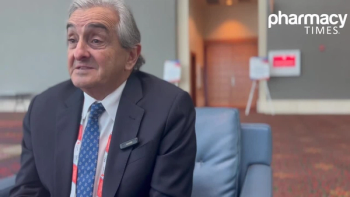
Consumers Are Leading the Change in the Health Care Revolution
They can continue to put pressure on companies and regulatory bodies to make the system work for them and not the other way around.
At the top of the list of grievances are the problems of access and a lack of transparency around high costs. All these issues have magnified over the past few years, leaving consumers frustrated and helpless.
Although consumers may feel disenfranchised by the system, they have more power than they think. In fact, consumers are driving a shift, albeit a slow one, toward a more consumer-driven health care system all the way from care to the point of sale. In 2023, there is even more opportunity for consumers to lead the charge and continue putting pressure on companies and regulatory bodies to make the health care system work for them and not the other way around.
Demand for Virtual Care Is a Health Care Inflection Point
The pandemic was an inflection point in health care for a variety of reasons, and demand for virtual care is an example. Alongside the rise of e-commerce for online shopping, consumer demand for digital care options, from online pharmacies to telehealth appointments, skyrocketed. In fact, 60% of consumers expect their digital health care experience to mirror that of retail.2 Telehealth companies responded to this demand, and Medicare telehealth utilization showed a 63-fold increase during the COVID-19 pandemic.3
This is perhaps the most obvious way consumer preferences have changed the way they receive care. As a result, it has made health care far more accessible by improving convenience, efficiency of care, and provider-to-patient communication across various demographics.
Death of the Insurance Model
Another major shift sparked by consumers over the past few years has been the rejection of insurance and the simultaneous movement to cash-based care. Through a combination of continued distrust in the system, health care education, and, quite simply, a necessity driven by the sheer inability to afford insurance premiums and out-of-pocket costs, the rate of consumers foregoing insurance and looking for options to pay cash upfront has increased.
As consumers further assess their options, many providers in the direct primary care space have stopped accepting insurance, instead offering customers varying degrees of unlimited care at a fixed monthly cash price.
Not only has this helped alleviate the issue of price for consumers, providers are also seeing the benefits of removing insurance from the equation. Taking away the hassle of navigating third-party insurance companies is making care cheaper and easier for patients and providers.
Grassroots Movement
We have already seen what happens when consumers use their agency to drive change within the health care system, but there is even more opportunity to do so in the years to come.
One of the exemplary ways consumers can drive change is by using their purchasing power to challenge pharmacy benefit managers (PBMs).
Consumers can also expand their agency in the health care system by exploring the possibility of care without the need for a formal outpatient setting. As at-home care increasingly becomes a viable option for chronically ill and older populations particularly those who require long-term care, old-fashioned patient visits will soon to be a thing of the past, as long as patients are still hungry for this option.
Overall, we have seen the power of consumer pressure when it comes to changing the way our systems operate. Health care is an area where consumers should continue to make noise, even when it feels fruitless, as the need to expedite its painfully slow transformation could not be more pressing. It is the hope of many across the country that consumers airing their grievances will lead to action and make the health care system consumer-oriented once and for all.
References
1. Williams J. Healthcare 2030: restoring trust in healthcare. Healthcare Financial Management Association. Accessed March 6, 2023. https://www.hfma.org/guidance/healthcare-2030/restoring-trust-in-healthcare/
2. Understanding the changing human experience in health care. Healthwise. July 25, 2022. Accessed March 6, 2023. https://www.healthwise.org/blog/understand-new-healthcare-experience.aspx
3. New HHS study shows 63-fold increase in Medicare telehealth utilization during the pandemic. CMS.gov. News release. December 3, 2021. Accessed March 6, 2023. https://www.cms.gov/newsroom/press-releases/new-hhs-study-shows-63-fold-increase-medicare-telehealth-utilization-during-pandemic
4. Trish E, Gascue L, Ribero R. Comparison of spending on common generic drugs by Medicare vs Costco members. JAMA Intern Med. 2021;181(10):1414-1416. doi:10.1001/jamainternmed.2021.3366
Newsletter
Stay informed on drug updates, treatment guidelines, and pharmacy practice trends—subscribe to Pharmacy Times for weekly clinical insights.


















































































































































































































